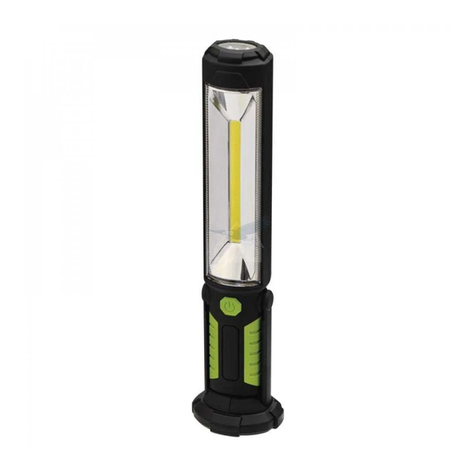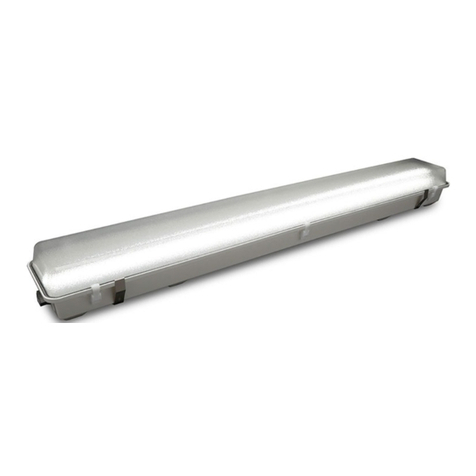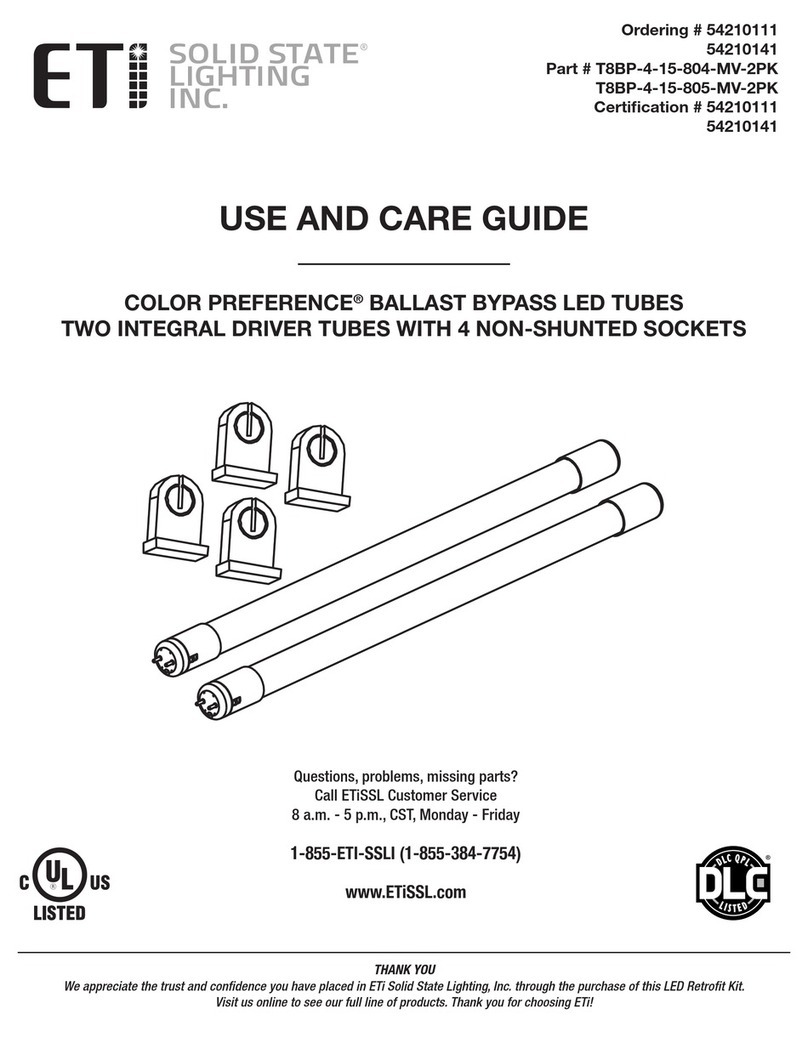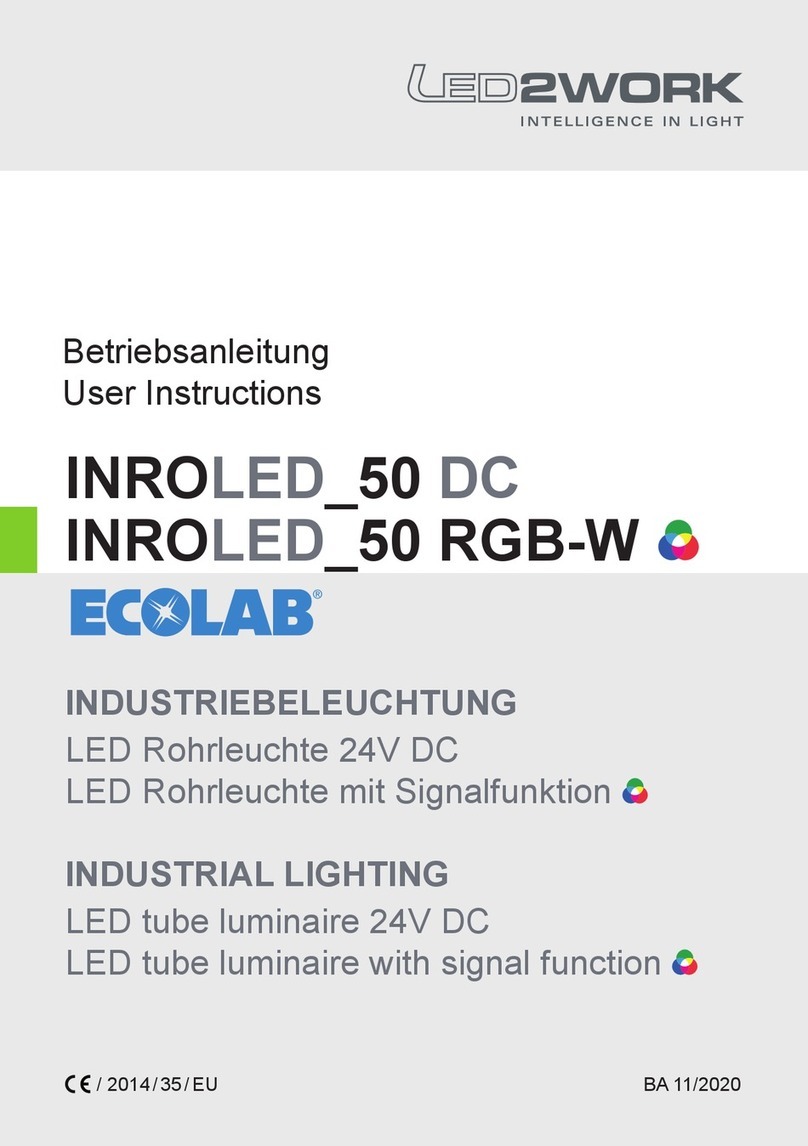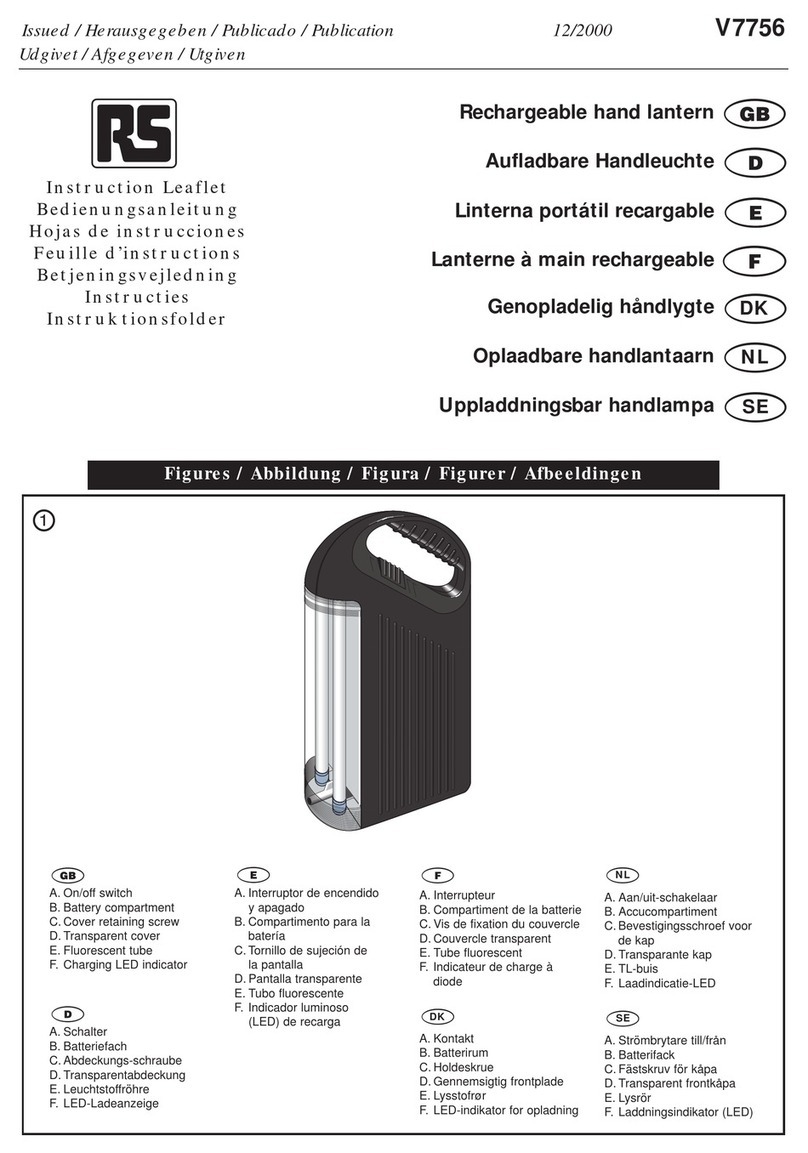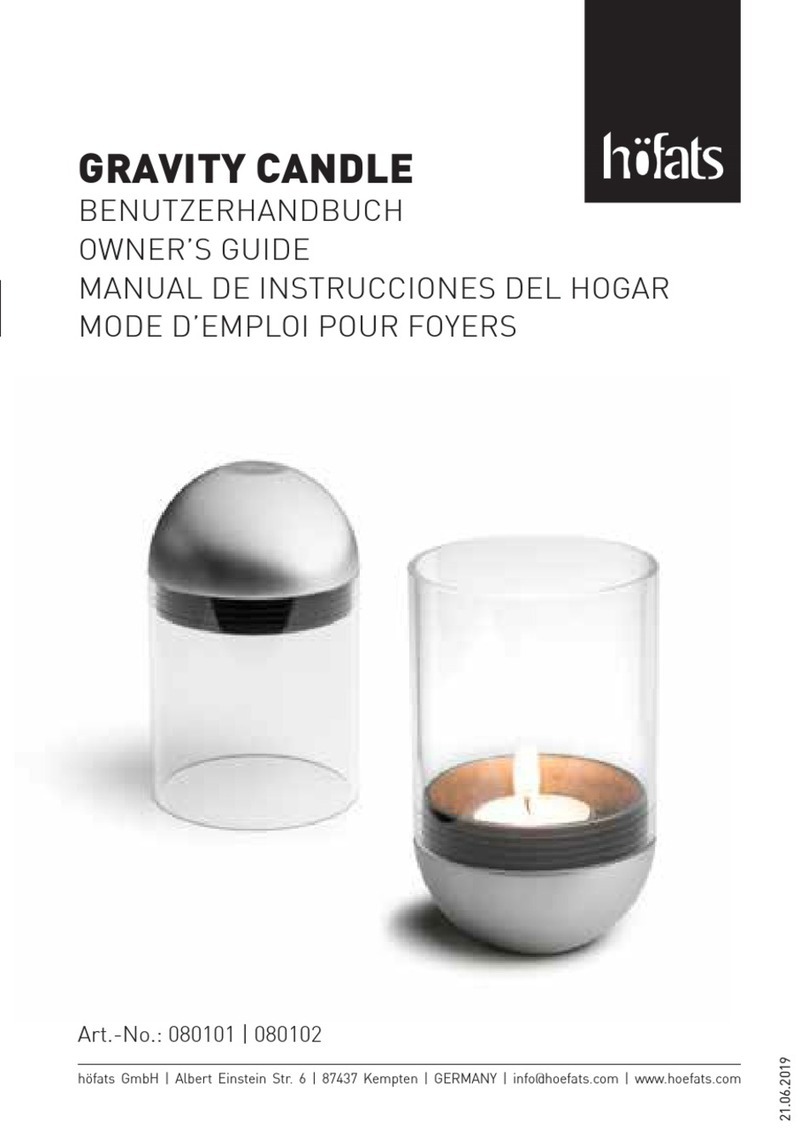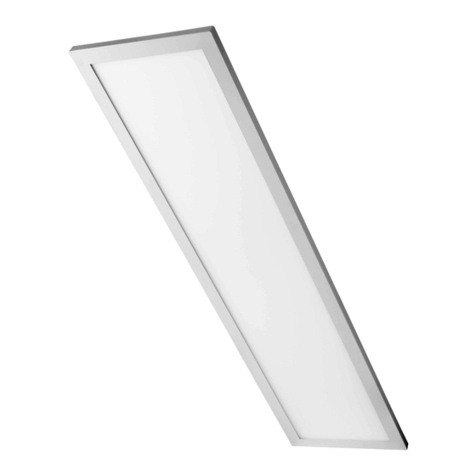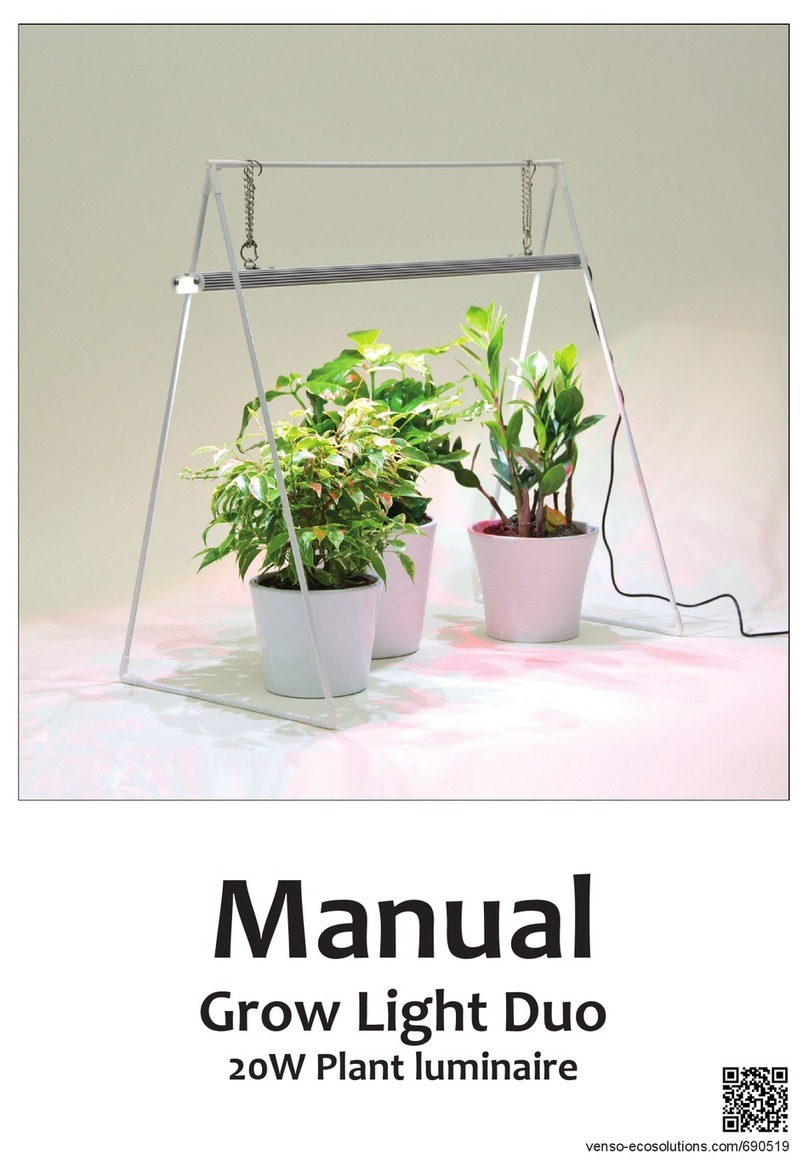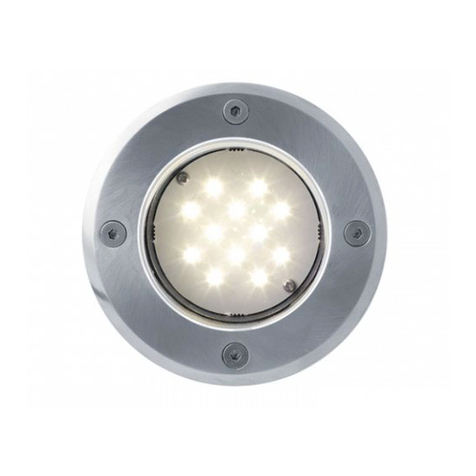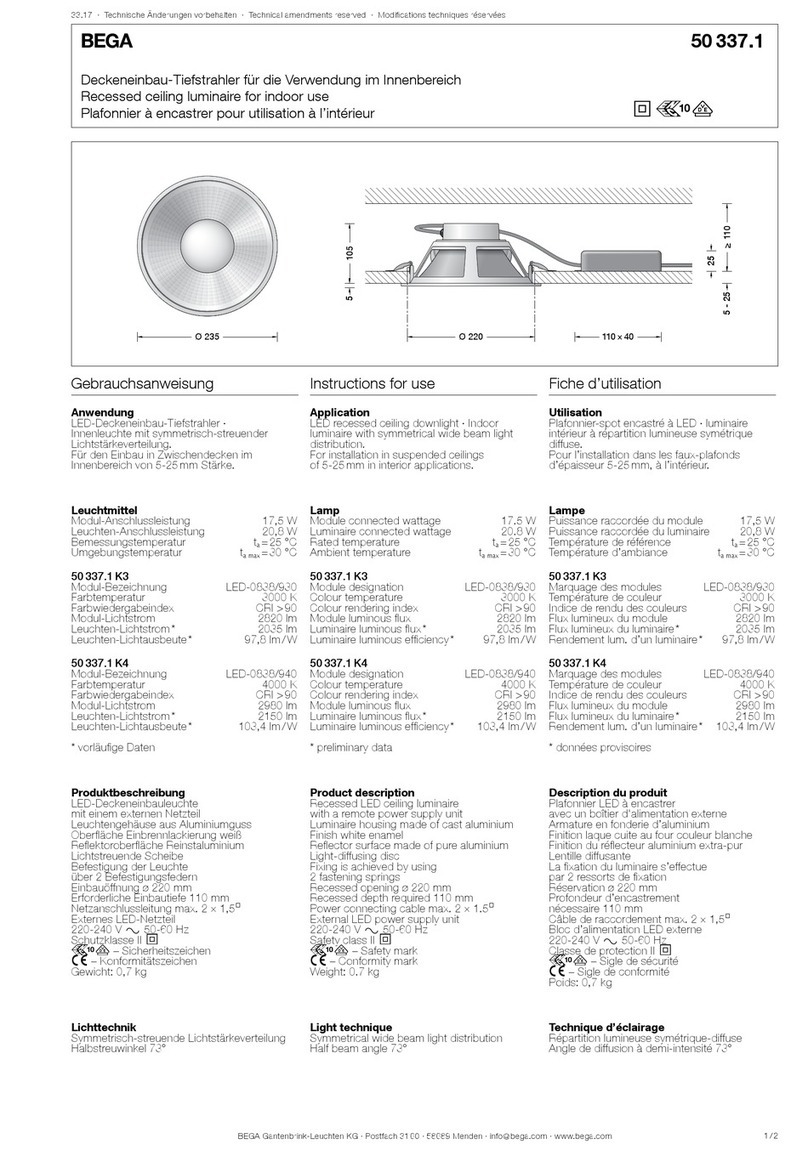ETC ARCP1 User manual

ArcSystem
Installation Manual
Part Number: 7490M2100 Rev: G
Released: 2019-11

Table of Contents
Table of Contents i
Introduction 1
Document Conventions 1
Help from ETC Technical Services 2
Safety 3
Compliance 4
FCCCompliance 6
EUDeclaration of Conformity 6
System Overview 7
D1 Series, D2 Series, and D4 Series Drivers 8
TX1 Transmitter 9
ArcMesh 9
ArcMesh Specifications 10
Emergency System Overview 11
Before You Begin Installation 13
Power Disconnect Device 13
Site Survey for Wireless Installations 13
Installation Requirements 13
Standard System One-Cell Installation 14
Preparing to Install the Driver 14
Installation Spacing - High Output Luminaires 15
Supplies 15
Electrical and Wiring Specifications 15
Mounting the Driver 17
Preparing the Ceiling for Recessed Luminaires 18
Wiring the Driver and Luminaire 19
Power 21
Luminaire Connection to Driver 22

DMX In and DMX Thru 23
D4 Series Driver Current Configuration 24
Installing One-Cell Recessed Luminaires 25
Installing One-Cell Yoke-Mounted Luminaires 25
Emergency System One-Cell Installation 26
Wiring D1 Series, D2 Series, and D4 Series Emergency Drivers 26
Connect Sense Input 28
Connect Maintained Input 28
D4 Series Emergency Driver Current Configuration 29
Complete Installation 29
Standard System Multi-Cell Installation 30
Installing 100–240 V Multi-Cell Luminaires 30
DMX 30
Installation Procedure 30
Installing 100–240 V Four-Cell Round Luminaires 31
Installing 100–277 V Multi-Cell Luminaires 32
Supplies 32
Electrical and Wiring Specification 32
Install the Luminaire 33
Terminate Power Wiring 34
Terminate DMX 35
Complete Installation 36
Emergency System Multi-Cell Installation 37
Installing Four-Cell Round Emergency Luminaires 37
Installing 100–277 V Emergency Multi-Cell Luminaires 38
Terminate Power Wiring 39
Complete Installation 41
Power Up and Control 42
Final Installation 42
Power Up Procedure 42
DMX System Control 42
ii ArcSystem Installation Manual

Commissioning a Wireless ArcSystem 43
Maintenance 44
Fuses 45
Troubleshooting 45
DMX Link LED 45
DMX Status LED 45
Emergency Operation and Test 46
TX1 Installation 47
Preparing for Installation 48
Supplies 48
Electrical and Wiring Specifications 48
Mounting 48
Terminate Wiring 49
Power 50
DMX In and DMX Out 50
Auxiliary Input 52
Final Installation and Power Up 52
Front Panel LEDs 53
Attach Antenna 53
Dual Redundancy Operation 53
Maintenance 54
Fuses 54
Table of Contents iii

iv ArcSystem Installation Manual

Introduction 1
Introduction
Congratulations on your purchase of ArcSystem products. ArcSystem is a family of overhead LED
products designed for installations where dimming, light quality, and ease of installation are
absolutely essential. With ArcSystem, you will experience perfectly smooth dimming from 100%
down to absolute zero. ArcSystem luminaires come in a variety of form factors, beam angles,
and color-temperature options, all with high-efficiency optics and an outstanding quality of light
ideal for any application.
ArcSystem products with ArcMesh can be controlled using wired DMX or the wireless ArcMesh
protocol. This manual provides step by step instruction on the installation of ArcSystem products
as well as full system integration.
For information on ArcSystem products with RDM control, see etcconnect.com/ArcSystem and
the
ArcSystem Pro One-Cell RDMInstallation Guide
and
ArcSystem Pro Multi-Cell
RDMInstallation Guide
.
Document Conventions
This document uses the following conventions to draw your attention to important information.
Note:
Notes are helpful hints and information that is supplemental to the main text.
CAUTION:
A Caution statement indicates situations where there may be
undefined or unwanted consequences of an action, potential for data loss or
an equipment problem.
WARNING: A Warning statement indicates situations where damage may
occur, people may be harmed, or there are serious or dangerous
consequences of an action
WARNING: RISK OF ELECTRIC SHOCK! This warning statement indicates
situations where there is a risk of electric shock.
All ETC documents are available for free download from our website: etcconnect.com.
Please email comments about this manual to: TechComm@etcconnect.com.

2 ArcSystem Installation Manual
Help from ETC Technical Services
If you are having difficulties and your problem is not addressed by this document, try the ETC
support website at support.etcconnect.com or the main ETC website at etcconnect.com. If none
of these resources are sufficient, contact ETC Technical Services directly at one of the offices
identified below. Emergency service is available from all ETC offices outside of normal business
hours.
When calling for help, take these steps first:
•
Prepare a detailed description of the problem
•
Go near the equipment for troubleshooting
•
Find your notification number if you have called in previously
Americas United Kingdom
ETC, Inc. ETC Ltd
Technical Services Department Technical Services Department
3031 Pleasant View Road 26-28 Victoria Industrial Estate
Middleton, WI 53562 Victoria Road,
800-775-4382 (USA, toll-free) London W3 6UU England
+1-608 831-4116 +44 (0)20 8896 1000
service@etcconnect.com techservltd@etcconnect.com
Asia Germany
ETCAsia ETC GmbH
Technical Services Department Technical Services Department
Room 1801, 18/F Ohmstrasse 3
Tower 1, Phase 1 Enterprise Square 83607 Holzkirchen, Germany
9 Sheung Yuet Road +49 (80 24) 47 00-0
Kowloon Bay, Kowloon, Hong Kong techserv-hoki@etcconnect.com
+852 2799 1220
techservasia@etcasia.com
France
ETC France
62-64 rue Danielle
Casanova
Saint-Denis Cedex,
F93200
+33 1 4243 3535
techservltd@etcconnect.com

Introduction 3
Safety
ArcSystem products are intended for professional use only. Read the entire manual before
using this equipment.
IMPORTANT SAFEGUARDS
When using electrical equipment, basic safety precautions should always be followed
including the following:
READ AND FOLLOW ALL SAFETY
INSTRUCTIONS
•
Do not use outdoors.
•
Do not let power supply cords touch hot surfaces.
•
Do not mount near gas or electric heaters.
•
Equipment should be mounted in locations and at heights where it will not
readily be subjected to tampering by unauthorized personnel.
•
The use of accessory equipment not recommended by the manufacturer may
cause an unsafe condition.
•
Do not use this equipment for other than intended use.
SAVE THESE INSTRUCTIONS

4 ArcSystem Installation Manual
Compliance
ArcSystem One-Cell Luminaires
Model Description Compliance
ARCP1 ArcSystem Pro One-Cell
cULus
•
Conforms to UL 2108
•
Conforms to UL 924
•
Conforms to UL2043 plenum
rating (ARCP1, ARCP1S, and
ARCP1H, recessed variants only)
•
Certified to CSA C22.2 No. 250.0
•
Certified to CSA C22.2 No. 141
EU
CE certified
FCCcompliant
ARCP1S ArcSystem Pro One-Cell Small
ARCP1H ArcSystem Pro One-Cell High Output
ARCP1M ArcSystem Pro One-Cell Micro
ArcSystem D1 Series, D2 Series, and D4 Series Standard Drivers
Model Description Compliance
ARCPD1DM* ArcSystem D1 Driver
cULus
•
Conforms to UL 8750
•
Certified to CSA C22.2 No. 250.13
EU
CECertified
FCCcompliant
ARCPD1DRDMM ArcSystem D1 RDMDriver
ARCPD1HDM* ArcSystem D1 High Output Driver
ARCPD1HDRDMM ArcSystem D1 High Output RDMDriver
ARCPD2DM* ArcSystem D2 Driver
ARCPD2DRDMM ArcSystem D2 RDMDriver
ARCPD4DCCMM* ArcSystem D4 ConstantCurrent Driver
with Molex Connectors
ARCPD4DCCMRDMM ArcSystem D4 ConstantCurrent RDMDriver
with Molex Connectors
ARCPD4DCCTMM* ArcSystem D4 ConstantCurrent Driver
with Two-Pin Terminals
ARCPD4DCCTRDMM ArcSystem D4 Constant Current RDMDriver
with Two-Pin Terminals
ARCPD4DCVTM* ArcSystem D4 Constant Voltage Driver
with Two-Pin Terminals
ARCPD4DCVTRDMM ArcSystem D4 Constant Voltage RDMDriver
with Two-Pin Terminals
*wireless-capable

Introduction 5
ArcSystem D1, D1HO, D2, and D4 Emergency Drivers
Model Description Compliance
ARCPED1DM* ArcSystem D1 Emergency Driver
cULus
•
Conforms to UL 8750
•
Conforms to UL924
•
Certified to CSA C22.2 No. 250.13
•
Certified to CSA C22.2 No. 141
EU
CE certified
FCCcompliant
ARCPED1DRDMM ArcSystem D1 RDMEmergency Driver
ARCPED1HDM* ArcSystem D1 High Output Emergency Driver
ARCPED1HDRDMM ArcSystem D1 High Output RDMEmergency Driver
ARCPED2DM* ArcSystem D2 Emergency Driver
ARCPED2DRDMM ArcSystem D2 RDMEmergency Driver
ARCPED4DCCMM* ArcSystem D4 ConstantCurrent Emergency Driver
with Molex Connectors
ARCPED4DCCMRDMM ArcSystem D4 ConstantCurrent RDMEmergency Driver
with Molex Connectors
ARCPED4DCCTM* ArcSystem D4 Constant Current Emergency Driver
with Two-Pin Terminals
ARCPED4DCCTRDMM ArcSystem D4 Constant Current RDMEmergency Driver
with Two-Pin Terminals
ARCPED4DCVTM* ArcSystem D4 Constant Voltage Emergency Driver
with Two-Pin Terminals
ARCPED4DCVTRDMM ArcSystem D4 Constant Voltage Emergency Driver
with Two-Pin Terminals
ArcSystem Multi-Cell Standard Luminaires with Integral Drivers
Model Description Compliance
ARCP2* 100–240 Vor 100–277 V Pro Two-Cell
cULus
•
Conforms to UL1598
•
Certified to CSA22.2 No. 250.0
EU
CE certified
FCCcompliant
ARCP2RDM 100–240 Vor 100–277 V Pro Two-Cell RDM
ARCP4L* 100–240 V or 100–277 V Pro Four-Cell Linear
ARCP4LRDM 100–240 V or 100–277 V Pro Four-Cell Linear RDM
ARCP4S* 100–240 V or 100–277 VPro Four-Cell Square
ARCP4SRDM 100–240 V or 100–277 VPro Four-Cell Square RDM
ARCP4R* 100–125 V or 100–240 VPro Four-Cell Round
ARCP4RRDM 100–125 Vor 100–240 VPro Four-Cell Round RDM
ARCP8* 100–240 Vor 100–277 V Pro Eight-Cell
ARCP8RDM 100–240 Vor 100–277 V Pro Eight-Cell RDM
*wireless-capable

6 ArcSystem Installation Manual
ArcSystem Multi-Cell Emergency Luminaires with Integral Drivers
Model Description
ARCPE2* 100–277 V Pro Two-Cell Emergency
cULus
•
Conforms to UL 924
•
Certified to CSA C22.2 No. 141
EU
CE certified
FCCcompliant
ARCPE2RDM 100–277 V Pro Two-Cell RDMEmergency
ARCPE4L* 100–277 V Pro Four-Cell Linear Emergency
ARCPE4LRDM 100–277 V Pro Four-Cell Linear RDMEmergency
ARCPE4S* 100–277 V Pro Four-Cell Square Emergency
ARCPE4SRDM 100–277 V Pro Four-Cell Square RDMEmergency
ARCPE4R* 100–125 V or 100–240 V Pro Four-Cell Round Emergency
ARCPE4RRDM 100–125 V or 100–240 VPro Four-Cell Round
RDMEmergency
ARCPE8* 100–277 V Pro Eight-Cell Emergency
ARCPE8RDM 100–277 V Pro Eight-Cell RDMEmergency
*wireless-capable
FCCCompliance
Wireless-capable ArcSystem products comply with Part 15 of the FCCRules. Operation is subject
to the following two conditions:
(1) this device may not cause harmful interference, and
(2)this device must accept any interference received; including interference that may cause
undesired operation.
ArcSystem wireless products contain FCC ID for US:TYOJN5168M5 and Industry Canada (IC) ID:
IC7438A CYO5168M5.
Note:
Wireless-capable ArcSystem products have been tested and found to comply
with the limits for a Class A digital device, pursuant to Part 15 of the FCC rules. These
limits are designed to provide reasonable protection against harmful interference when
the equipment is operated in a commercial environment. This equipment generates,
uses, and can radiate radio frequency energy and, if not installed and used in
accordance with the instructions, may cause harmful interference to radio
communications. Operation of this equipment in a residential area is likely to cause
harmful interference, in which case the user will be required to correct the interference
at his own expense.
EUDeclaration of Conformity
Wireless-capable ArcSystem products comply with the essential requirements of the RED
Directive of the European Union (2014/53/UE).
Wireless-capable ArcSystem products also comply with the following standards:
ETSI EN 301 489-17 V2.1.1 (2009), ETSI EN 301 489-1 V2.2.0 (2011), Draft ETSI EN 301 489-17
V3.2.0 (2017), Draft EN 301 489-1 V3.2.0 (2017), ETSI EN 300 328 V1.8.1 (2012), ETSI EN 300
328 V1.9.1 (2015), ETSI EN 300 328 V2.1.1 (2016)

System Overview 7
Chapter 1
System Overview
ArcSystem luminaires are available in 100–240 V standard models with IEC connectors, 100–
125 V emergencymodels with NEMA5-15 connectors, or 100–277 V hard-wired standard or
emergency models. ArcSystem Pro One-Cell luminaires require an external driver.
ArcSystem Pro One-Cell
•
external 100–277 V D1 Series or D4 Series
driver required
•
ideal for short/medium throw
•
25 W full load power consumption
•
fixed version recessed/flush mount only
•
adjustable version recessed/flush mount
with two-axis tip and tilt
•
yoke mount version with two-axis tip and
tilt
•
beam angle options: 18°, 30°, 50°
ArcSystem Pro One-Cell Small
•
external 100–277 V D1 Series or D4 Series driver
required
•
ideal for short/medium throw
•
25 W full load power consumption
•
adjustable version recessed/flush mount with
single-axis tilt
•
yoke mount version with single-axis tilt
•
beam angle options: 19°, 24°, 37°, 60°
ArcSystem Pro One-Cell High Output
•
external 100–277 V D1 HO driver required
•
ideal for long throw
•
100 W full load power consumption
•
fixed version recessed/flush mount only
•
adjustable version recessed/flush mount
with two-axis tip and tilt
•
beam angle options: 18°, 30°, 50°
ArcSystem Pro One-Cell Micro
•
external 100–277 V D2 driver required
•
ideal for short/medium throw
•
20 W full load power consumption
•
adjustable version recessed/flush mount with
two-axis tip and tilt
•
yoke mount version with two-axis tip and tilt
•
beam angle options: 19°, 24°, 37°, 60°
ArcSystem Pro Two-Cell
•
integral driver
•
ideal for medium throw
•
55 W full load power consumption
•
Standard:100–240V with IEC connector or
100–277V hard-wired input options
•
Emergency:100–277 Vhard-wired input
options
•
yoke-mount only
•
beam angle options: 19°, 24°, 37°, 60°
ArcSystem Pro Four-Cell
•
integral driver
•
ideal for medium/long throw
•
100 W full load power consumption
•
Standard:100–240V with IEC connector or 100–
277V hard-wired input options
•
Emergency:100–277 Vhard-wired input options
(linear and square); 100–125 Vhard-wired cables
with NEMA 5-15 connectors (four-cell round,
North America only); 100–240 V hard-wired
cables with bare ends (four-cell round, Europe)
•
linear and square yoke-mount and round options
•
beam angle options: 19°, 24°, 37°, 60°
ArcSystem Pro Eight-Cell
•
integral driver
•
ideal for long throw
•
200 W full load power consumption
•
Standard:100–277V hard-wired input
options
•
Emergency:100–125V with NEMA 5-15
connectors or 100–277 Vhard-wired input
options
•
yoke-mount only
•
beam angle options: 19°, 24°, 37°, 60°
Note:
The ArcSystem Pro One-Cell Micro is not available in 5000 K or Fade to Warm
variants. The ArcSystem Pro One-Cell High Output is not available in 3500K, 4000K,
5000K, or Fade to Warm variants.

8 ArcSystem Installation Manual
D1 Series, D2 Series, and D4 Series Drivers
D1 Driver
D1 HO Driver
D2 Driver D4 Driver
ArcSystem Pro One-Cell luminaires require an external driver. ArcSystem D1, D2, and D4 Series
drivers use standard RJ45 connectors for DMXcontrol.
•
The D1 Driver provides up to 25 W to a single One-Cell or One-Cell Small luminaire.
•
The D1 HO Driver provides up to 100 W to a single One-Cell High Output luminaire.
•
The D2 Driver supports one or two One-Cell Micro luminaires and provides up to 10 W per
output.
•
The D4 Constant Current Driver with Molex connectors supports four One-Cell or One-Cell
Small luminaires.
•
The D4 Constant Current Driver with terminals provides 48 VDCand 400 mA or 600 mA
per output channel, with a maximum total output of 2.4 A or 100 W.
•
The D4 Constant Voltage Driver with terminals provides 24 VDC and up to 50 W per
output channel, with a maximum total output of 2 Aor 150 W.
For more information on installation of standard or emergency system drivers, see
Standard
System One-Cell Installation on page 14
or
Emergency System One-Cell Installation on page26
.
Note:
ArcSystem Pro One-Cell Micro and ArcSystem Pro One-Cell standard
luminaires are not interchangeable. One-Cell Micro luminaires require a D2 driver to
function; One-Cell and One-Cell Small luminaires require a D1 driver or D4 driver to
function.
Note:
All ArcSystem wireless luminaires require a TX1 Transmitter and
commissioning tool to set DMX addresses for both wired DMX and wireless
installations. Contact your ETC Service Technician for more information.

System Overview 9
TX1 Transmitter
The TX1 Transmitter is the DMX wireless gateway for the ArcMesh
protocol.
One transmitter:
•
Controls up to 100 devices across 64 DMX addresses.
•
Has a 24 preset scene memory.
•
Has DMX wired output for control of third party equipment
within scene store.
•
Has two auxiliary inputs for closed contact connection to
trigger a stored scene.
Each transmitter can be set to one of 16 available network IDs
allowing multiple transmitters to be used concurrently without
“cross-talk.” When two or more transmitters are set to the same
network ID and radio channel, the transmitter with the highest
MAC address acts as a master with the others assuming the role of
backup.
For information on system installation, see
TX1 Installation on
page 47
.
ArcMesh
ArcSystem products can be controlled using wired DMX through RJ45 connections, or the
wireless ArcMesh protocol. A wireless installation is an ideal solution for retrofit situations where
installing additional cable is not practical.
The following diagram illustrates a basic hybrid ArcSystem installation with a wireless luminaire,
TX1 Transmitter, and a wired DMX console for the main control source.
AC Power
100-240 VAC
Active DMX
output for other
wired devices
DMX512 from
Lighting Control
AUX Input Toggle
Operation
DMX out DMX in
Wireless Luminaire
TX1 Transmitter
Each system requires a minimum of one TX1 Transmitter. The TX1 is used as a transmitter of
wireless data to luminaires or other devices within a system.
Note:
By default the TX1 DMXoutput is disabled. If you require DMX output from the
TX1, you must use the ArcSystem comissioning tool software to add DMXfixtures.

10 ArcSystem Installation Manual
ArcMesh Specifications
•
Use up to 100 devices per TX1 transmitter.
•
Patch up to 64 ArcMesh channels to 512 DMX
channels.
•
Use up to 16 TX1 transmitters per system.
There are no system range limitations for transmitting
data between luminaires because each luminaire has the
ability to act as a repeater (see Re-Broadcast Mode
below). ArcSystem is self-regulating and continues to
reconfigure the communication “mesh” to establish the
most successful path of communication transmission.
Re-Broadcast Mode
By default all ArcSystem luminaires are shipped with Re-
broadcast Mode turned off to reduce the amount of
wireless activity. In areas of poor wireless reception, re-
broadcast mode may be enabled on a luminaire-by-
luminaire basis to improve the overall signal level of the
system.
CAUTION:
If re-broadcast mode is
required, use this feature in as few
luminaires as possible to avoid unnecessary
traffic on the network and possible system
performance issues.

System Overview 11
Emergency System Overview
ArcSystem drivers and luminaires can be purchased in UL924 listed variants. Each of the
luminaires can be configured to be UL924 listed when wired into an existing emergency
response system.
•
See
Emergency System One-Cell Installation on page26
.
•
See
Emergency System Multi-Cell Installation on page37
.
Install the ArcSystem D1, D2, or D4 Series driver or multi-cell luminaire in a location that is
accessible by qualified personnel for testing of the emergency operation.
Install the ArcSystem multi-cell luminaire in a location that is accessible by qualified personnel
for testing of the emergency operation.
Note:
Luminaires must be hard-wired to emergency certified drivers to be considered
for UL924 certification.
Note:
The number of designated emergency lamps and their height is the
responsibility of the specifier and installer in order to achieve the minimum FC levels of
NFPA101. Installation scenarios should be evaluated by the AHJ to confirm illuminance
and performance requirements of ANSI/NFPA 101 and the IBC.
Note:
ArcSystem Pro One-Cell Micro luminaires in emergency installations must be
installed with a maximum mounting height of 23.2 ft (7.07 m).
Note:
Installation must follow all national and local codes for electrical equipment.
Note:
Normal and emergency wiring cannot be contained in the same conduit
according to NEC 700.10(B).

12 ArcSystem Installation Manual
Emergency drivers and luminaires require two branch circuit connections. These inputs have the
following functions:
1. Normal branch circuit to sense failure of the normal supply. Connect to Sense Input
connector.
2. Normal/Emergency branch circuit providing power to the luminaire in both conditions.
Connect to Maintained Input connector.
Sense detects when power is lost and forces the luminaire to a full-on state, powered by the
emergency supply through the Constant Power input. Control of the luminaire will not be
available until the sense input has been restored.
WARNING: Do not mix 120 V and 277 V between the sense and
emergency feeds.
AVERTISSEMENT : Ne pas inverser les alimentations à 120V et 277V
entre les alimentations de détection et de secours.
WARNING: Sense (normal) and Maintained (normal/emergency) feeds
must have the same phase. The diagram below shows the recommended
installation.
AVERTISSEMENT : Les alimentations de détection (normale) et
d’entretien (normal/secours) doivent être sur la même phase. Le schéma ci-
dessous présente l’installation recommandée.
normal
breaker
panel
ArcSystem multi-cell
emergency luminaire
or
ArcSystem one-cell
emergency luminaire
with emergency
driver
emergency
breaker
panel
normal branch circuit
used to sense normal power failure
connect to Sense input
normal/emergency branch circuit
normal
normal/emergency
from UL1008
ATS by others
connect to Maintained input

System Overview 13
Before You Begin Installation
Review the following sections before beginning your ArcSystem installation. ArcSystem products
should only be installed by a qualified installer or electrician.
Power Disconnect Device
Before installation, make sure you have a readily accessible input power disconnect device
installed ahead of your ArcSystem products.
WARNING: RISK OF DEATH BY ELECTRIC SHOCK! Failure to disconnect all
power to the system before installation, maintenance, cleaning, or any
other system modification could result in serious injury or death.
AVERTISSEMENT : RISQUE DE MORT PAR DÉCHARGE ÉLECTRIQUE!
Négliger de débrancher toutes les sources d’alimentation du système avant
l’installation, l’entretien, le nettoyage ou toute autre modification du
système peut causer des blessures graves ou la mort.
De-energize main feed to ArcSystem and follow appropriate Lockout/Tagout
procedures as mandated by NFPA 70E. It is important to note that electrical
equipment such as breaker panels can present an arc flash hazard if
improperly serviced. This is due to the high amounts of short-circuit current
available on the electrical supply to this equipment. Any work must comply
with OSHA Safe Working Practices.
WARNING: Circuits that are installed without an accessible power
disconnect device cannot be serviced or operated safely.
AVERTISSEMENT : Il est imprudent d'utiliser ou de réparer les circuits
installés sans qu'un dispositif de déconnexion de l'alimentation ne soit
accessible.
Site Survey for Wireless Installations
ArcSystem transmitters and luminaires operate in the unlicensed 2.4 GHz band using the IEEE
802.15.4 standard. This band is shared with other technologies such as Wi-Fi, Bluetooth, low
power sensor networks, wireless AV transmitters and some radio microphones.
Before commissioning a system, a wireless site survey is essential.
Gathering information on how your wireless lighting system will overlap with all other Wi-Fi
traffic in the area will help determine setup of transmitters and which luminaires should be re-
broadcasting, not just receiving wireless data.
Installation Requirements
•
Indoor installation only: 0–40°C (32–104°F), 5–95% non-condensing humidity.
•
Dry locations only.
•
Installation location must support the weight of the luminaire, driver, and applicable
mounting hardware.
CAUTION:
ArcSystem luminaires and drivers are not suitable for use in
spaces with restricted air flow. Enclosing the luminaires or drivers temporarily
or permanently may cause damage to the luminaires or drivers.

14 ArcSystem Installation Manual
Chapter 2
Standard System One-Cell Installation
This chapter provides information on how to install One-Cell drivers and luminaires in a standard
ArcSystem installation.
Preparing to Install the Driver
D1 Driver
D1 HO Driver
ArcMesh Wireless DMX
D1 DriverTX1 Transmitter
D2 Driver D4 Driver
The D1, D2, and D4 Series drivers are compact, convection cooled LEDdrivers with RJ45
connections for local DMX and wireless capability for the ArcMesh protocol. Each driver has an
INand THRU option, using two separate connectors. The D1 and D1 HOdrivers can control a
single luminaire each. The D2 driver can control two ArcSystem Pro One-Cell Micro luminaires.
The D4 driver can control up to four ArcSystem Pro One-Cell or Pro One-Cell Small luminaires.
Up to 32 drivers can be installed on one hard-wired line of DMX.
The following illustration shows an example of a linear ceiling installation with one luminaire for
each D1 Series driver. The cable between an ArcSystem Pro One-Cell Series luminaire and its
driver is approximately 1 m (40 in) long.
Note:
If you want to daisy chain power wiring, it must be connected through a
junction box as shown below. Follow all applicable local and national electrical codes.
A
B
DEF
C
APower connections DScrew mounting locations
BDMXIn and Thru connections ED1 or D1 HOdriver
CFlexible conduit FLuminaire
This manual suits for next models
47
Table of contents
Other ETC Lantern manuals

ETC
ETC IRIDEON AR500 Assembly instructions
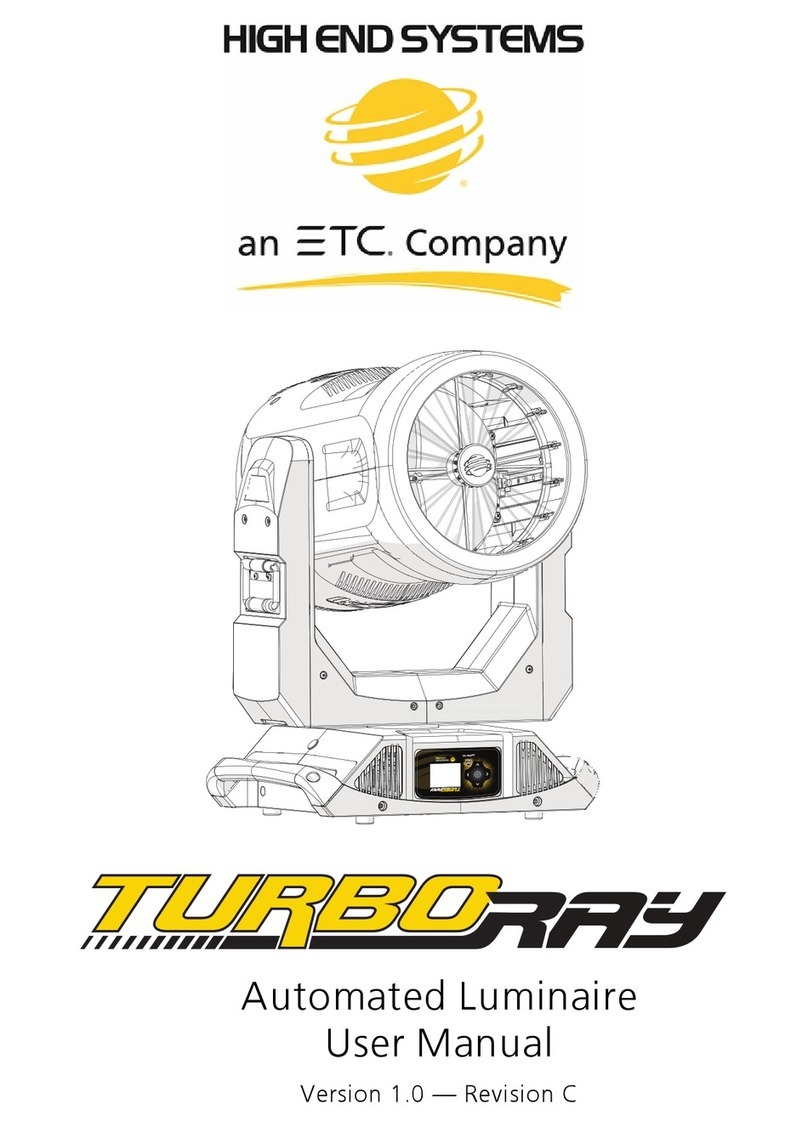
ETC
ETC TURBO RAY User manual
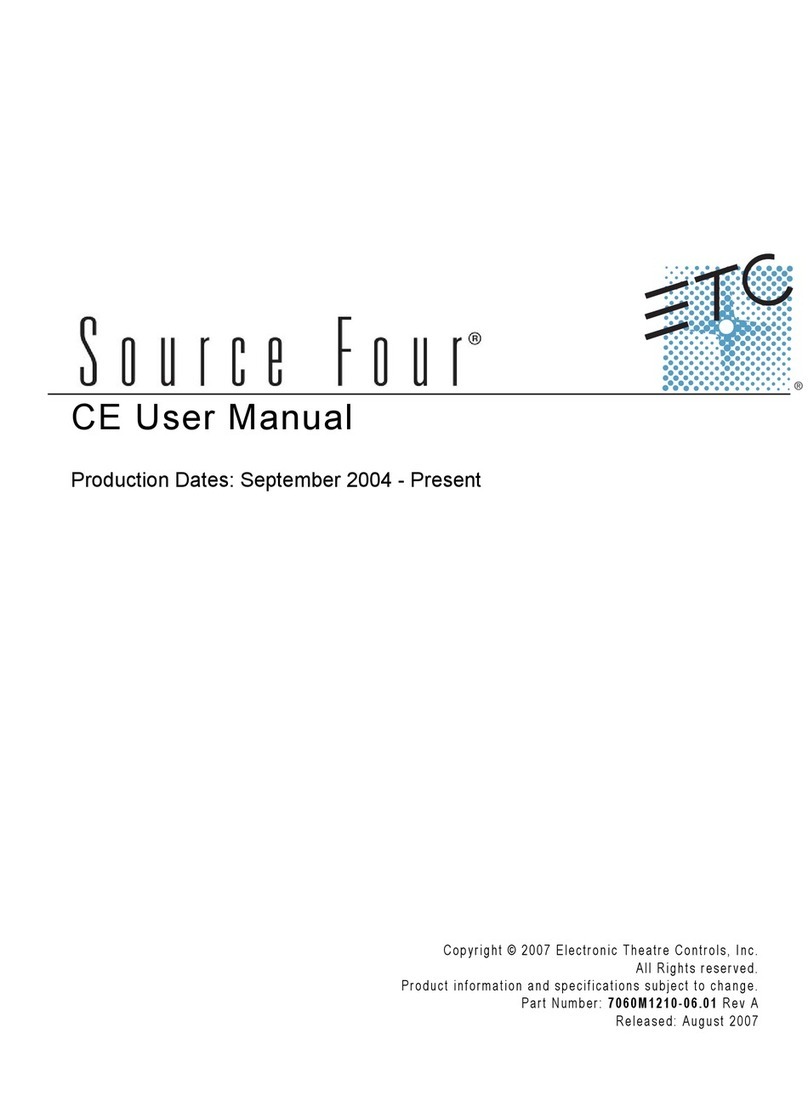
ETC
ETC ETC 405 User manual
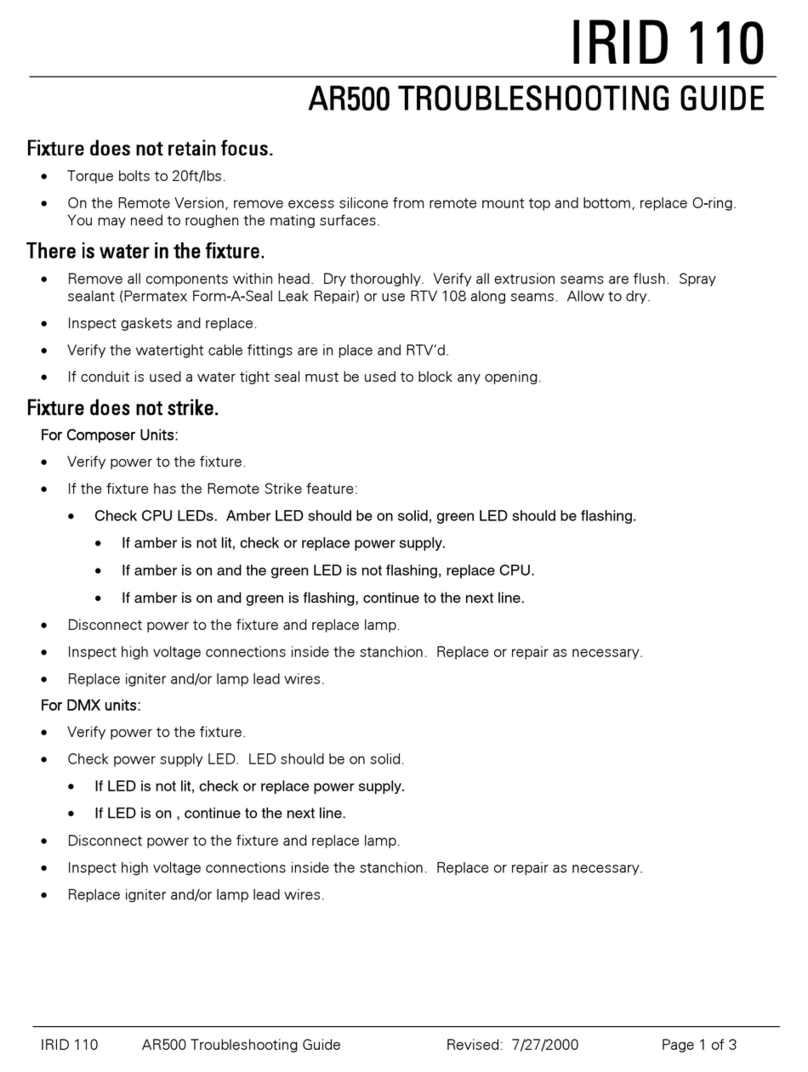
ETC
ETC IRIDEON AR500 User manual

ETC
ETC ArcSystem Navis 100 User manual
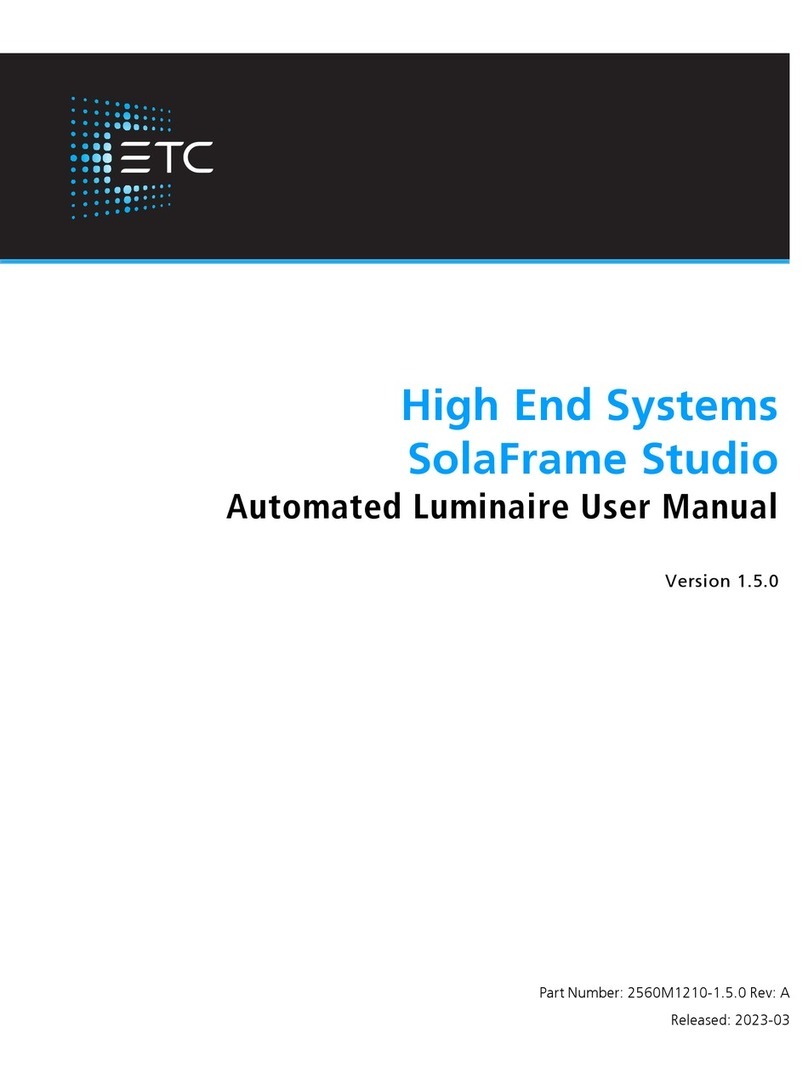
ETC
ETC High End Systems SolaFrame Studio User manual
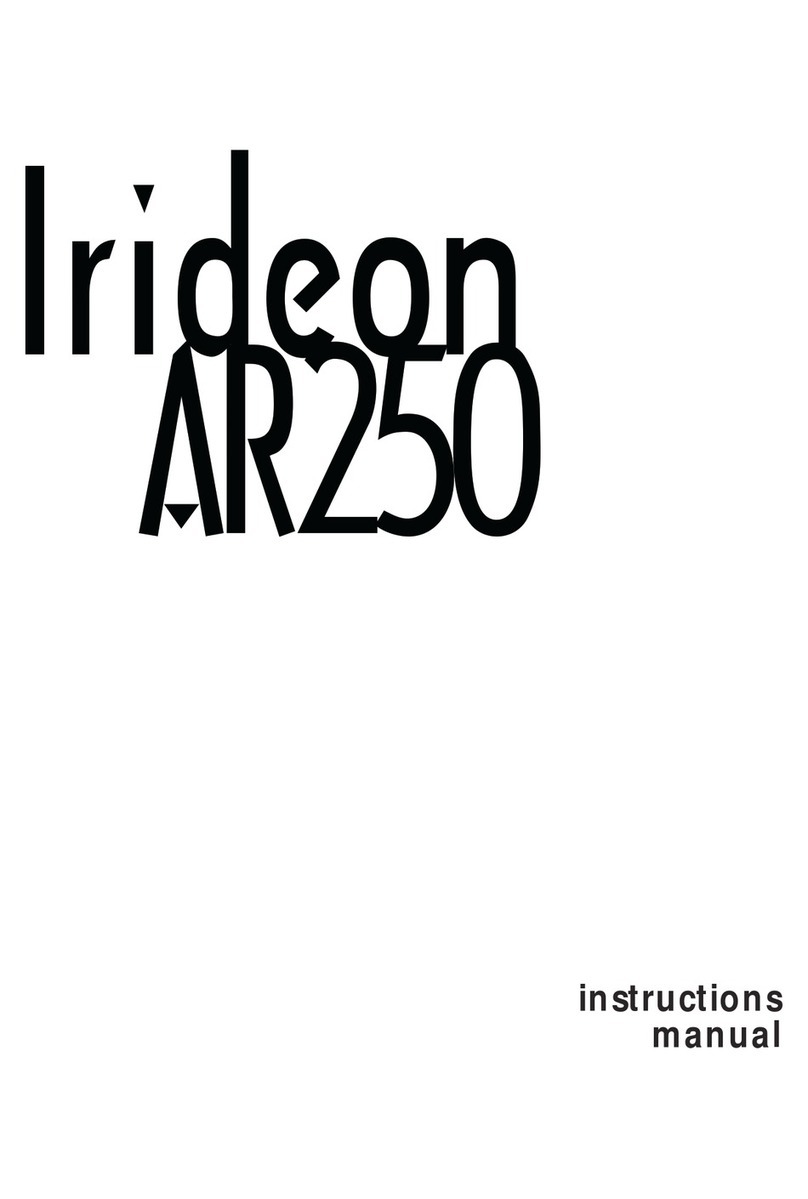
ETC
ETC Irideon AR250 User manual
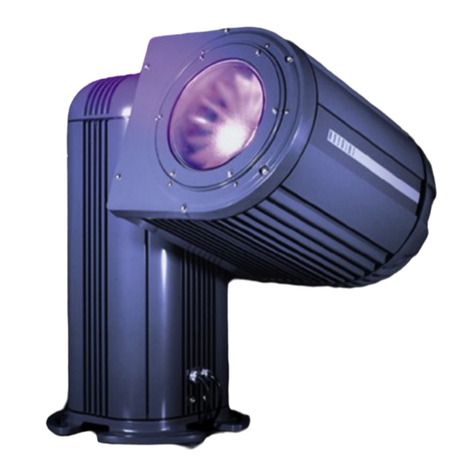
ETC
ETC IRIDEON AR500 Installation instructions
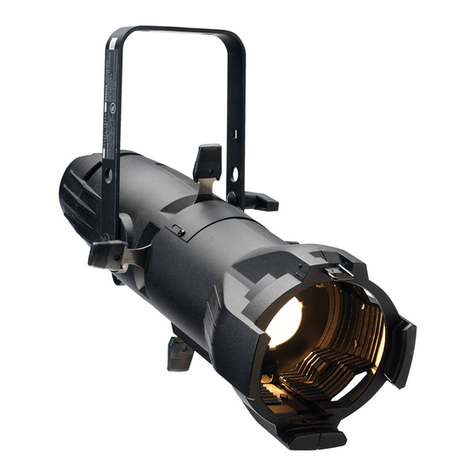
ETC
ETC Source Four jr User manual


